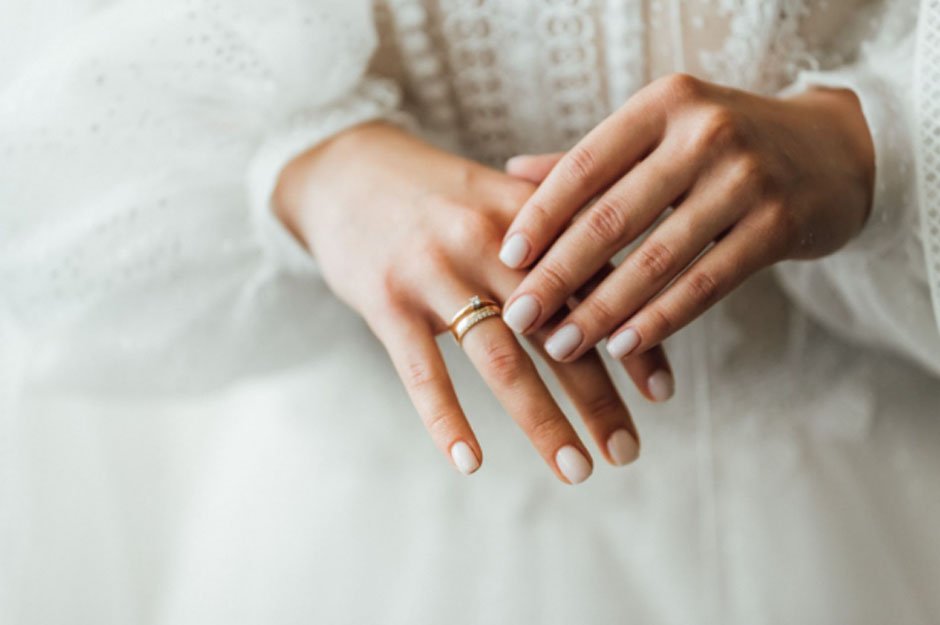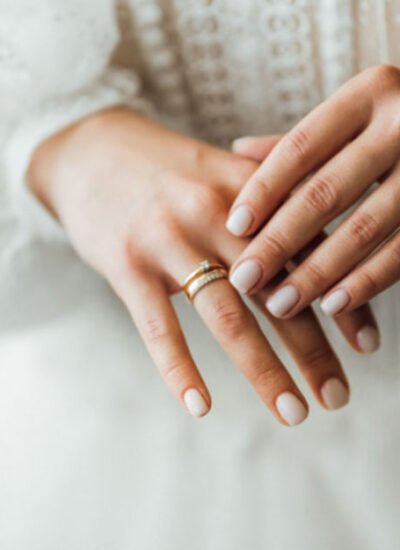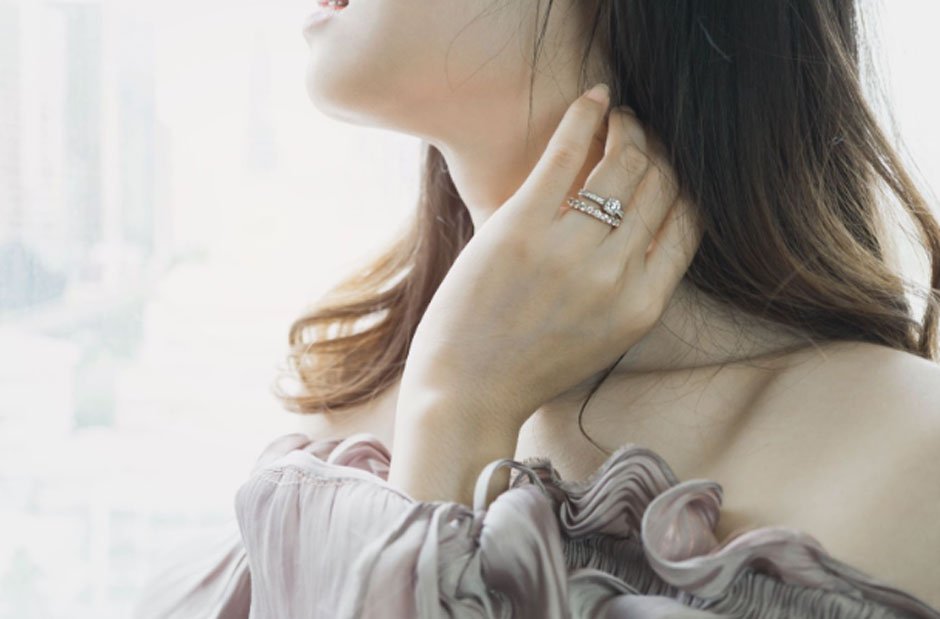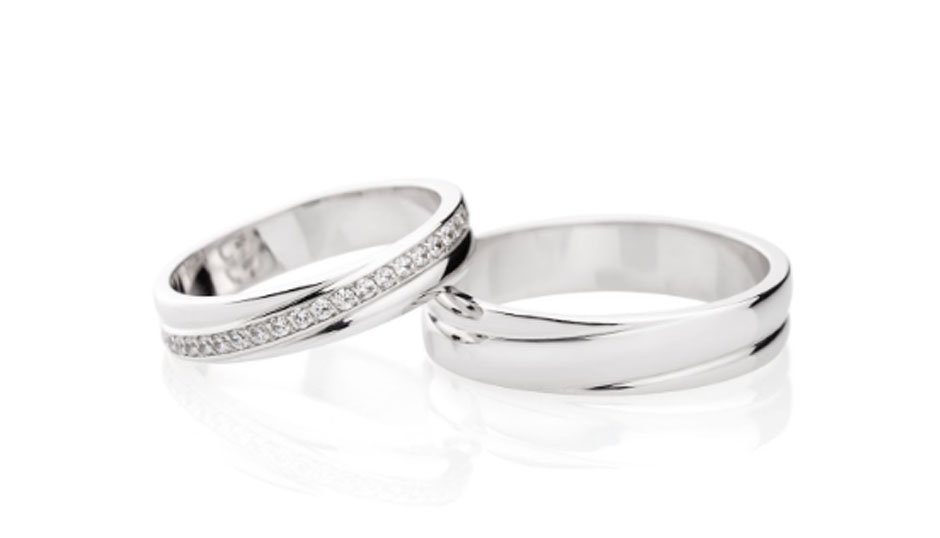 Trends change. Tastes evolve. But your wedding band? That stays.
Trends change. Tastes evolve. But your wedding band? That stays.
It’s one of the few pieces of jewelry most people wear every single day. Through workdays, long flights, lazy Sundays, and every version of yourself you grow into – it’s right there. So it should be something you don’t get tired of looking at.
Not flashy. Not trendy-for-the-sake-of-it. Just well-made, well-chosen, and built to last.
There are plenty of bridal bands to browse, but only a few will stay in step with you as your style evolves. The one that holds up over time – that’s the one worth keeping.
A Clean Diamond Band
If you want something classic but still luminous, this is the go-to.
A slim diamond band – whether pavé, channel-set, or shared-prong – offers just enough light without overwhelming your hand. It’s delicate, low-profile, and plays well with nearly every engagement ring shape.
Choose diamonds that are closely spaced for a smooth look, and opt for a full or half eternity depending on your lifestyle (half gives you more comfort; full gives you uninterrupted sparkle). Width-wise, something between 1.5–2.5mm is versatile enough to stand alone or stack without feeling bulky.
This is the kind of band that quietly elevates whatever else you wear.
A Plain Gold or Platinum Band (That’s Not Boring)
There’s something quietly powerful about a ring that doesn’t try to prove anything.
A plain band in platinum, yellow gold, or rose gold gives you timeless appeal with none of the stress of matching or styling. Go for a soft rounded profile (comfort fit), or a slightly flat edge if you want a cleaner line.
What makes it interesting? Finish. Consider a matte/brushed texture instead of high-shine, or a subtle hand-hammered surface for character. These small shifts keep things personal without chasing trends.
This one ages well – literally. Scratches blend in, patina builds, and it starts to feel more like you over time.
Contoured or Curved Bands
If your engagement ring has a low-set stone, a straight band might bump or sit awkwardly. That’s where a contoured or curved band comes in – it fits around the stone, so both rings sit comfortably flush.
This isn’t just a practical solution – it’s also a chance to add a softer silhouette to your stack. A gentle curve or chevron shape adds a bit of movement and visual interest, especially if your engagement ring is very structured or angular.
And when worn on its own? Still elegant. Still balanced. Still wearable.
A Stacking-Ready Band
Stacking isn’t a trend – it’s how a lot of people actually wear rings now. If you plan to mix in anniversary bands, heirlooms, or redesigns down the line, start with a band that layers well.
That means slim, smooth edges, low profile, and nothing too ornate. You want the flexibility to add a stone, a pop of color, or another texture later – without having to start over.
It also gives you more options if you decide not to wear your engagement ring daily. A good stacking band should look complete all by itself.
A Band with Hidden Detail
Sometimes the best part of a ring is the part only you know about.
A small diamond on the inside of the band. An engraved message or date. A subtle milgrain edge that catches the light just slightly. These quiet details don’t compete with your ring – they give it meaning.
This is especially appealing if you lean toward classic designs but still want something yours. It keeps things timeless while giving the piece a personal anchor you’ll never outgrow.
Two-Tone or Mixed Metal Bands
Mixing metals used to be a risk. Now it’s just smart.
A two-tone band (think platinum and yellow gold, or rose gold and white gold) gives you more room to experiment with the rest of your jewelry – especially if your watch, bracelets, or engagement ring are in a different metal.
Choose a design where the contrast is subtle, not loud – maybe just a border, inlay, or twist detail. It adds dimension without locking you into a single style.
Twenty years from now, you’ll be glad you didn’t box yourself in.
Matte Diamond Bands
Shiny doesn’t always equal elegant.
A matte-finish band with inset or flush-set diamonds gives you texture, light, and longevity without the sparkle overload. The finish softens the look and hides wear well, while the stones add just enough detail to make it feel special.
This is a great option if you want something modern but still timeless. It feels thoughtful – less about show, more about substance.
Comfort Comes First
You’ll wear this ring a lot. It shouldn’t pinch, catch, or slide around.
Try on different profiles – rounded bands tend to be easier for everyday wear, especially if you’re using your hands constantly. Pay attention to weight, too: platinum is heavier and has a satisfying feel, while gold is lighter and warmer to the touch.
Also, consider width. Wider bands can feel more present, while narrow ones are easier to layer. Go with what fits your proportions – not what’s trending on Pinterest.
If it feels easy, you’ll wear it for decades without thinking twice.
Keep It Low-Maintenance
Some rings are beautiful but high-maintenance – easily scratched, hard to clean, or needing regular re-plating.
If you want something that ages with you, look for solid metals (no plating), secure settings, and smooth edges that don’t snag or trap dirt. Eternity bands with exposed prongs might require more care, while flush or channel settings are much easier to live with.
The best long-term piece is the one that doesn’t need babying – it just goes wherever you go.
Choose What You’ll Still Admire – Even After a Decade
A good wedding band doesn’t try too hard. It’s balanced, wearable, and built for the long haul.
It should still feel like a part of you in ten or twenty years – not just a match for your engagement ring, but something that stands on its own.
So take your time. Try different widths. Mix textures. Look at it in daylight. Think less about trends, and more about what you won’t mind seeing on your hand every single day.
If it holds up under that test, it’s probably the one.







Leave a Reply